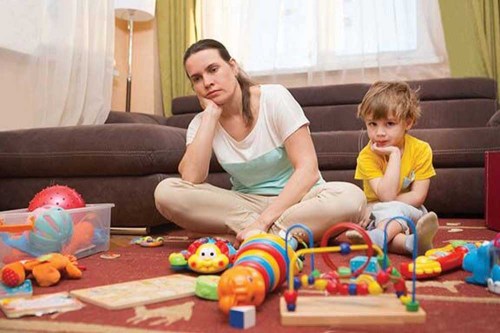Simple steps to keep your household decluttered
Published 12:00 am Sunday, June 30, 2024

- 859851980
A cluttered environment can lead to increased stress, decreased productivity and a feeling of being overwhelmed. For children, a clutter-free space promotes better focus, creativity and a sense of responsibility. But, if you’re like most parents, the prospect of decluttering with children may seem daunting. Children’s belongings have a magical ability to multiply at alarming rates. The sheer volume can seem like an insurmountable challenge, but with the right approach and a little patience and flexibility, it can be a rewarding experience that teaches valuable life skills. Here are a few tips to ease your way:
Involve your kids. While it might be tempting to employ ninja-like stealthiness to make your children’s excess belongings disappear, my preference is to involve your children to the extent that age, maturity and personality allows. Doing so helps children develop decision-making skills and teaches them how to manage their own belongings, providing them with a sense of ownership and responsibility.
Be a good role model. Setting a positive example is essential to success when decluttering with children. Kids learn best through observation. You can’t expect your children to get rid of their stuff if you can’t get rid of yours. They need to see that it’s okay to let things go. Demonstrate decluttering in shared spaces first and then involve children in their own spaces with their own belongings.
Begin early and often. When my daughter was little, I would work on decluttering projects, both hers and mine, in a space adjacent to her. As she got older, I started to involve her directly. We started with her clothes, because it was easy for her to understand when something no longer fit. She’s six now and can handle short, directed decluttering projects on her own.
Selectively remove the clutter. Encourage children to make decisions about their belongings. Respect a child’s desire to keep things that are important to her by allowing items that fit within a designated space. Ask questions to help them be honest about what they use and love. My daughter likes to ask her toys if they want to make her happy or if they’re ready to make another kid happy.
What we do with our excess belongings matters. I have found that my daughter has an easier time letting things go when she knows where they’re going. We try to donate books to her classroom so she can share them with her friends and we give toys to friends or to grandparents so that she can play with them at their houses. We also occasionally utilize resale and consignment options. My daughter has recently started telling me: “I get to keep the money when you sell my things. It’s only fair, Mom.”
Another strategy that my daughter and I use is a “time out” tote that we keep in our basement. We periodically go through her room and pick toys to put in time out. Then every month or so we go through the tote and assess the toys to decide if they should remain in time out, come back to her room, or go on to make another child happy.
Find a place for what you keep. Children thrive in environments where there is order and structure. Creating designated spaces for toys, books, clothes and other belongings can significantly reduce clutter. Keep it simple by keeping like items together. I suggest using clear and/or labeled storage bins so that children can see where each item belongs. Encourage your children to put things back in the same place after each use. This habit, once ingrained, can lead to a more organized and less cluttered home.
Ongoing maintenance. Decluttering is a continuing process, not a one-time event. Set up a regular routine. We do clothes when we put away laundry. We do toy clean-outs every month or two and before birthdays and Christmas. Regular decluttering is necessary to maintain a tidy space and instill good habits. Limiting the toys and clothes that come into your home will simplify the maintenance process.
Give yourself and your children grace. Decluttering with young children takes time and patience. There is no one-size-fits-all approach when it comes to decluttering and maintaining an organized space. Ultimately, you will want to base your approach on your children’s ages, personalities, maturity levels and your specific family situation. Remember it’s a learning process.





